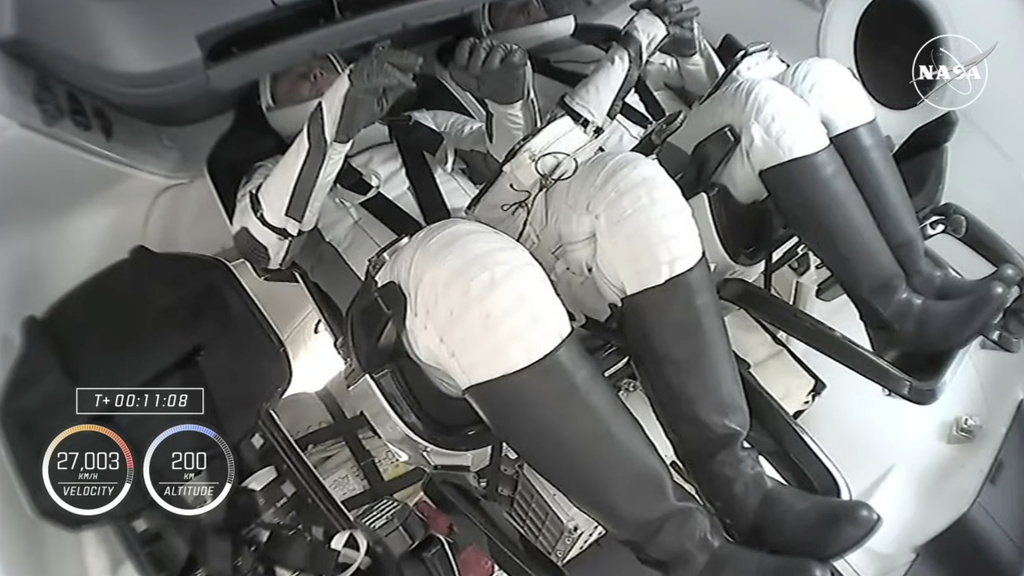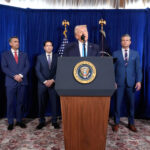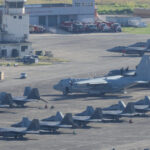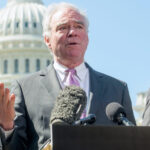SpaceX Launches Rescue Mission for Two Stranded Astronauts \ Newslooks \ Washington DC \ Mary Sidiqi \ Evening Edition \ SpaceX launched a rescue mission for two stranded astronauts at the International Space Station, with a capsule sent up on Saturday to bring them back to Earth next year. NASA’s Nick Hague and Russia’s Alexander Gorbunov are tasked with retrieving astronauts Butch Wilmore and Suni Williams after Boeing’s Starliner returned empty. The mission, delayed by various challenges, will keep the astronauts in space for over eight months.
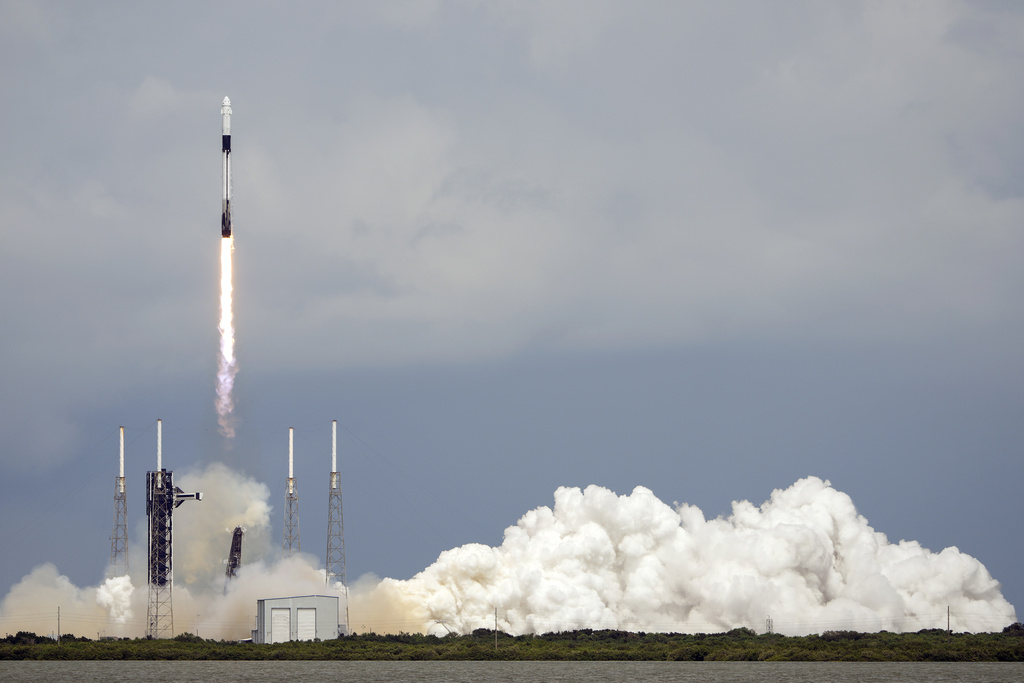
SpaceX Rescue Mission for Stranded Astronauts: Quick Looks
- SpaceX launched a mission to rescue two astronauts stranded at the International Space Station.
- The capsule, launched Saturday, will bring Butch Wilmore and Suni Williams home next year.
- NASA astronauts Nick Hague and Russia’s Alexander Gorbunov are leading the retrieval mission.
- Boeing’s Starliner initially left Wilmore and Williams stranded due to safety concerns.
- Hague and Gorbunov will stay until February to return with the two stranded astronauts.
- Delays caused by Starliner’s issues postponed the crew’s homecoming and other scheduled missions.
- The mission launched from Cape Canaveral’s Launch Complex 40, marking a new milestone for SpaceX.
- NASA astronaut Zena Cardman expressed mixed emotions, as she was pulled from the mission for logistics.
Deep Look:
SpaceX launched a high-stakes rescue mission on Saturday to bring home two astronauts stranded aboard the International Space Station (ISS). The mission comes after Boeing’s Starliner capsule returned empty to Earth earlier this month due to safety concerns. The astronauts, NASA’s Butch Wilmore and Suni Williams, were left without a safe means of return, prompting NASA to call upon SpaceX to send a rescue mission to the ISS, though it won’t be completed until next year.
The SpaceX capsule rocketed into orbit with NASA’s Nick Hague and Russian cosmonaut Alexander Gorbunov on board. The duo will stay at the ISS until they can bring Wilmore and Williams back, likely not before late February. NASA officials explained that bringing them back sooner would interfere with other crucial scheduled missions, leading to an extended stay for the pair.
By the time they return, Wilmore and Williams will have been in space for over eight months—far longer than the one-week trip they originally anticipated when they signed up for Boeing’s first astronaut flight that launched in June. The unexpected extension of their mission came after NASA deemed Boeing’s Starliner too risky for the return journey following a series of malfunctions, including thruster troubles and helium leaks during the spacecraft’s journey to the ISS.
NASA subsequently opted to alter the SpaceX mission, reducing the number of crew members initially planned for the flight to make room for the returning Wilmore and Williams. Williams has since been promoted to commander of the ISS, and the station will return to its normal population of seven once Hague and Gorbunov arrive. Their arrival will also allow the four astronauts currently on board—who have been there since March—to finally return home in their own SpaceX capsule, after having their homecoming delayed for weeks due to the Starliner complications.
Ahead of the mission, NASA astronaut Nick Hague commented that adaptability is a constant necessity in spaceflight. “There’s always something that is changing. Maybe this time it’s been a little more visible to the public,” Hague noted. His experience made him a suitable choice for this rescue mission, having faced challenges during a failed Russian rocket launch six years ago. On that occasion, the rocket failed shortly after liftoff, and Hague, along with his cosmonaut crewmate, was launched safely off the rocket’s top.
Joining Hague was Russian cosmonaut Alexander Gorbunov, who remained on the flight under an existing exchange agreement between NASA and Russia’s space agency, Roscosmos. Originally, rookie NASA astronaut Zena Cardman and veteran astronaut Stephanie Wilson were also slated for this mission but were pulled after NASA decided to focus on a rescue mission instead. Both Cardman and Wilson, who have been promised a future space mission, attended the launch at NASA’s Kennedy Space Center and took part in the livestream.
Visibly emotional, Cardman reflected on the experience of watching a launch that she originally thought she’d be part of: “Every crewed launch that I have ever watched has really brought me a lot of emotion. This one today was especially unique,” Cardman said, her voice trembling. “It was hard not to watch that rocket lift off without thinking, ‘That’s my rocket and that’s my crew.’”
As the countdown ticked down to liftoff, Nick Hague paid tribute to his colleagues Wilmore and Williams, who were stranded aboard the ISS. “Unbreakable. We did it together,” Hague said just moments before the launch. Once safely in orbit, he described the ride as a “sweet ride” and expressed his gratitude to everyone who had made the rescue mission possible.
The challenges of launching with half a crew and the complexities of returning with astronauts trained on another spacecraft have not been lost on Hague. “We’ve got a dynamic challenge ahead of us,” he acknowledged after arriving at the Kennedy Space Center from Houston last weekend. “We know each other and we’re professionals, and we step up and do what’s asked of us.”
SpaceX continues to be the leader in NASA’s commercial crew program—a program created after the retirement of the space shuttles over a decade ago. SpaceX has far outpaced Boeing, delivering astronauts to the ISS as early as 2020. The current rescue mission represents SpaceX’s 10th crew flight for NASA, solidifying its position as a key player in human spaceflight.
Boeing, meanwhile, has struggled to keep up. After a series of technical failures, Boeing had to repeat a Starliner test flight with no crew on board following the first mission that veered off course. The most recent Starliner mission, which led to Wilmore and Williams being stranded, ended with the capsule landing safely in the New Mexico desert on September 6. The Starliner has since returned to Kennedy Space Center. A week prior to the SpaceX rescue mission, Boeing’s defense and space chief was replaced, a move seen by many as an attempt to realign the company’s struggling space program.
The SpaceX launch on Saturday was notable for another reason: it marked the first astronaut liftoff from Cape Canaveral’s Launch Complex 40 at the Cape Canaveral Space Force Station. SpaceX took over this former Titan rocket pad nearly two decades ago, using it for satellite launches, while typically launching astronauts from Kennedy Space Center’s historic Apollo and shuttle pad nearby. As more Falcon rockets began to soar, SpaceX sought flexibility to accommodate the growing demand for missions, and this launch from Complex 40 was part of that expansion.
Despite a delay caused by Hurricane Helene, which recently battered Florida, the SpaceX launch went ahead smoothly. The newly launched capsule will remain docked at the ISS until it is ready to make its return journey, expected in late February, with Wilmore and Williams on board.
The stakes are high, as the successful retrieval of the stranded astronauts will be seen as yet another testament to SpaceX’s reliability in NASA’s commercial crew program. As SpaceX forges ahead, Boeing’s struggles to meet its commitments continue to raise questions about the future of its involvement in NASA’s ambitious human spaceflight plans. For now, the focus remains on safely bringing Wilmore and Williams back home—something that both NASA and SpaceX are committed to ensuring.

